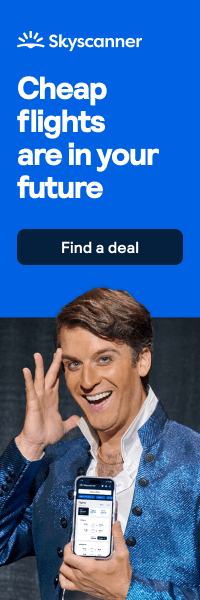According to Statista, the luxury goods market currently accounts for 22% of online sales, with a value of 62bn EUR.
As shoppers redefine the traditional shopping experience with more shoppers than ever checking out online and in-app, it’s never been more difficult to predict where your consumer is going to head to the checkout. For example, shoppers may initially see a product that they love in-store, then add that product to their online basket, abandon the cart and then revisit the purchase after seeing an ad on social media the next month.
There’s no longer a one-size-fits-all approach to product purchasing. Different consumers purchase products in different ways and as such, have different expectations around the shopping experience– both in-store and online. To convert sales, luxury brands need to meet and surpass these expectations, particularly when it comes to payments.
Seamless payments drive luxury purchases, particularly when it comes to overseas growth and younger shoppers. So, here’s how luxury brands can create a luxury payments ecosystem to amplify business models, unify the customer experience and drive sales.
Seamless sales
When paying for a premium product, consumers expect a premium experience. In-store, that experience might include getting a fancy product bag or a glass of fizz when browsing the store. Whereas online, creating that feeling of luxury is slightly more difficult – with payments playing a bigger role than you’d think.
The checkout process should be seamless and quick and anything else becomes a barrier to conversion and may cause luxury shoppers to abandon their carts. An example of this could be complicated authentication checks and slow server response times.
Fraud
Another key element of the online customer experience is the mitigation of fraud. With more money on the line for consumers, brands that don’t embed double-shield protection, rules and criteria into their payment processes, risk not only the sale but the customers' overall brand loyalty – one of the key drivers for sales in luxury.
Historically, luxury brands have worked hard to address payment friction. Many brands have entered partnerships with a variety of payment methods, for example, Klarna, to offer customers a premium, seamless and simple, purchase experience.
The problem with this is time. The reconciliation of collecting each partner's bespoke payment data (i.e., sales volumes, VAT, purchaser demographics) and then bringing that data together in a meaningful way, is a significant undertaking taking a huge amount of capacity. One that many businesses will, mistakenly, skip when revenue is flowing in.
A bespoke shopper experience
To create a bespoke shopping experience aligned with the target audience, retailers need to first understand their customer: where in the world they’re based, how they like to shop, their payment preferences, the time of day when they are most likely to make a sale. To easily capture these insights, brands should partner with a merchant acquirer that offers a dashboard of data. The dashboard should provide live insights which instantly allow businesses to identify trends, fraudulent patterns and customers' payment preferences. Leveraging these insights, brands can go on to create the perfect personalised payment experience.
Again, the most important thing for luxury shoppers is a smooth shopping experience, regardless of the brand touchpoint. Whether the consumer is shopping on their mobile, tablet, or in-store via a virtual check-out, the process needs to be consistent and quick.
An easy solution to streamline the process across all digital platforms is securely saving card details. After the first purchase, the customer’s card can be immediately tokenised, protecting them from unauthorised access and fraud. Once stored on file, the card can be used for one-click payments, enabling customers to check out in moments, rather than minutes. The payment process becomes premium and the bespoke shopping experience is improved.
In addition, it’s important to align the payment options available to the wants and needs of the consumer. From open banking to buy now pay later, the diversification of payment methods is allowing brands to target an entirely new consumer.
For example, a luxury retail brand targeting Gen Z and Millennial shoppers may look to offer Buy Now Pay Later (BNPL) at checkout. With BNPL, luxury products have become more accessible to those who want to purchase the products they love while paying in a way which works for them. Consumers can finance their purchases in part and pay off the remaining balance instalments giving them better control over their money. When targeting more established consumers, brands might look to offer other well-known and trusted forms of payment like traditional debit cards. The point is the target audience has huge implications on the payment method and retailers need to know their customer, to know what payments to offer.
Payments for innovation and expansion
Luxury retailers are often at the front of innovation. From Gucci and Louis Vuitton being among the first to have a presence in the Metaverse to redefined high street shopping experiences by providing digital hanging room backdrops, luxury continues to spearhead the retail sector into new horizons. Yet, many brands often overlook the role that payments play in innovation and expansions.
When looking to expand operations overseas, one of the most crucial steps is the ability to receive and send money in different currencies. Merchant acquirers are enabling brands to make cross-border payments simple and seamless, aligning the payment types to the preferences in that market. Overseas, payment options massively vary and it’s important again, to offer payment options aligned to your customers.
Getting payments right holds huge opportunities for building a brand and the most vulnerable part of a brand's interaction with the customers is the checkout. A solid, safe and seamless payment experience leaves the customer with an impression of trustworthiness, whereas a bad payment experience will prevent a shopper from returning, despite the products.
Finally on innovation, when leveraged strategically, payments can be optimised to improve credit card processing, increasing revenue. With the cost of living rising, financial margins are set to become significantly tighter for businesses of all sizes in all sectors. Streamlining back-end payments processes hold huge revenue opportunities for businesses – preventing fraud and saving countless hours on admin - alleviating some of the financial pressures faced, building business resilience.
Adopting an entirely new method of managing payments is always going to be a significant undertaking for an organisation, but it’s so important to get payments right the first time. Seamless payments are expected for premium products, holding opportunities for the business to grow and build customer loyalty. Now’s the time to build a resilient check-out experience, suited to the modern shopper.













